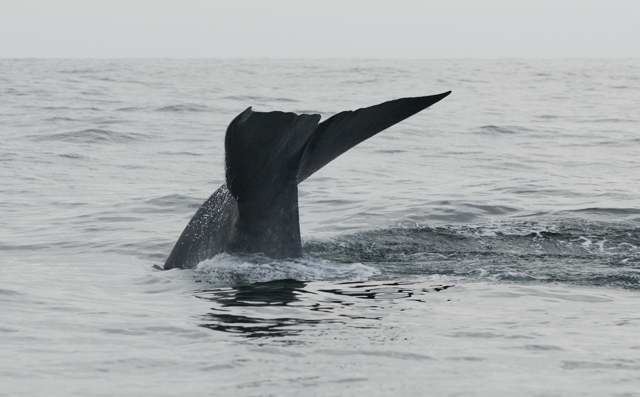The Blue whale is the biggest animal ever to inhabit our planet and it is a privilege to be able to meet them on a regular basis off Pico Island, where we are based.

The sheer size of a Blue whale is nothing short of mind blowing
Although Blue whale hunting stopped in the 60's, by that time whalers had wiped out about 99% of the Southern hemisphere population. Today, after about 60 years, Blue whales feeding in the Antarctic are still not showing very encouraging sign of recovery.
On the positive side, the species seems to do much better in the Northern hemisphere.

The splashguard of Blue whales is particularly pronounced and serves the purpose of protecting the blowholes
Like almost all baleen whales (suborder Mysticeti), Blue whales in the Azores are mostly sighted in spring.
Islands like Pico represents a very appealing, opportunistic foraging habitat for these animals, as they migrate north towards the high-latitude foraging grounds they will reach and exploit in the summer.
The sequence below shows a Blue whale preparing to dive for krill.









If you really want to see Blue whales (along with lots of other species!) and learn more about them, you may consider joining our spring programme called Blue Whale Migration.
It includes lots of trips at sea and some interesting presentations aimed to teach you more about the biology, behaviour and conservation status of this beautiful and gigantic whale.
By joining our Blue whale programme will also help our research projects.
We really hope to see you in Pico! 😃